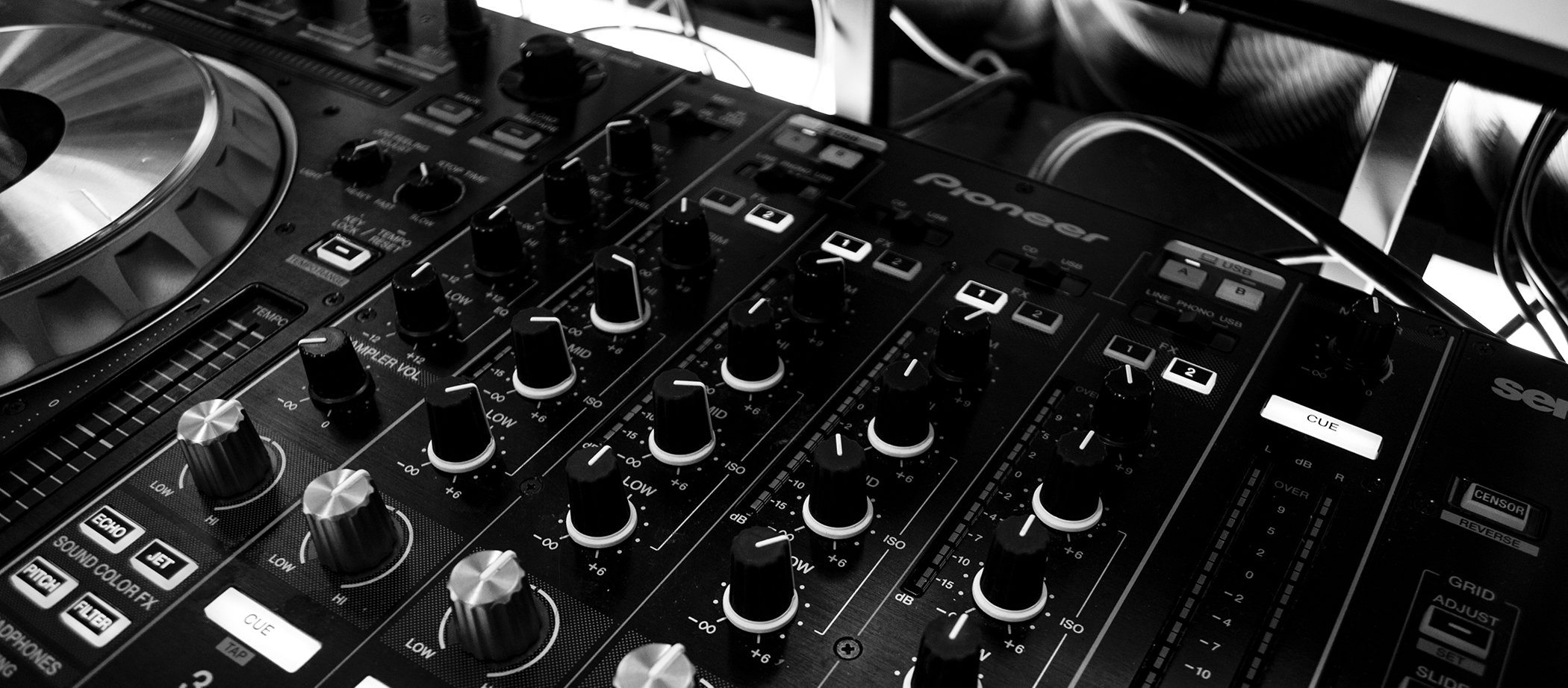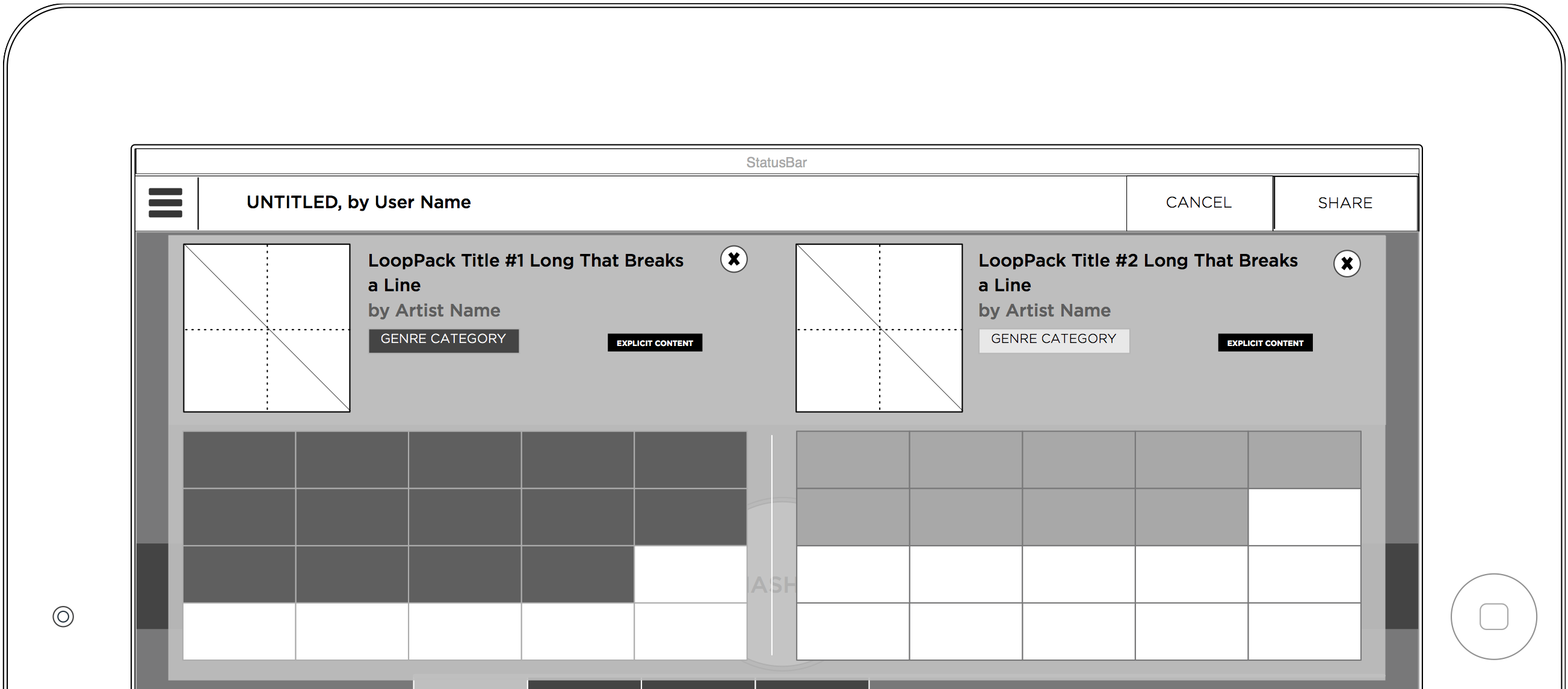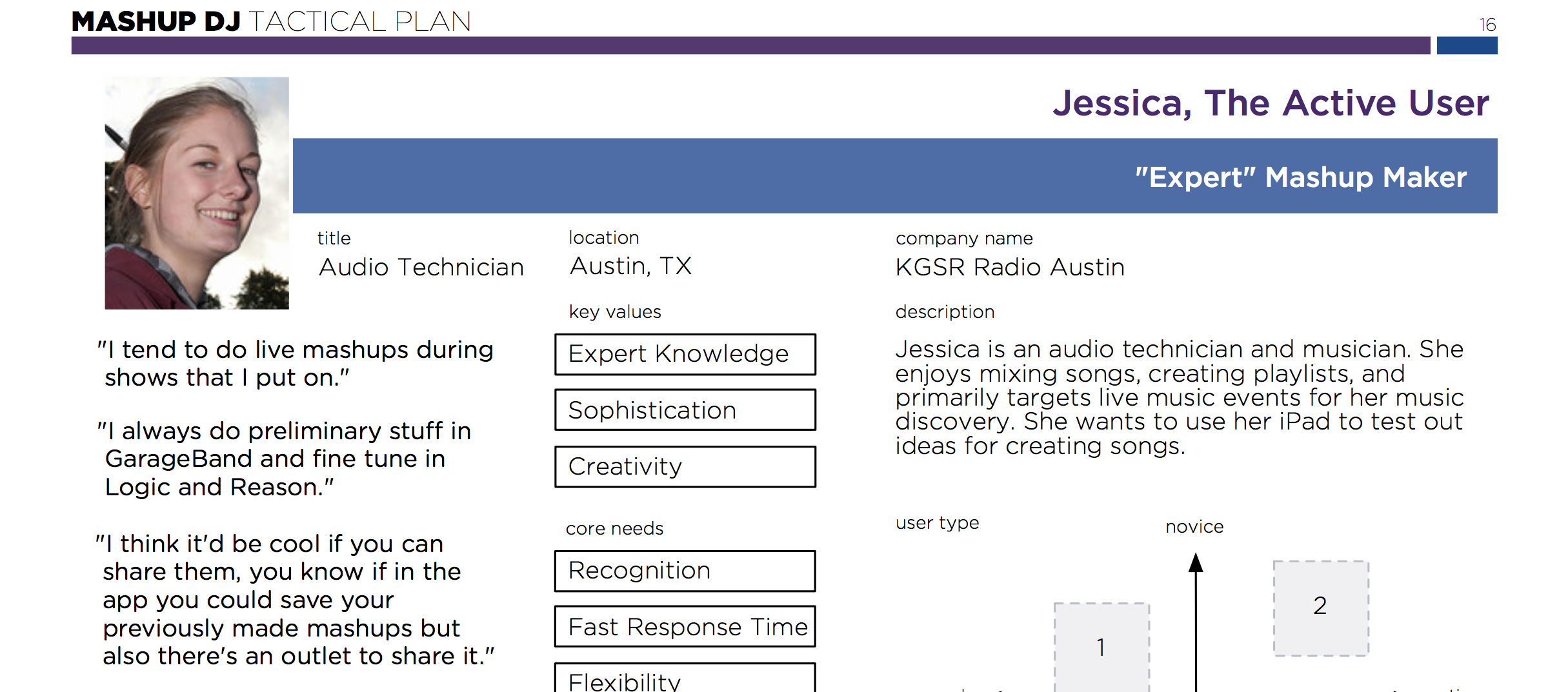YEAR
2013
DELIVERABLES & METHODS
Product Vision
Functional Requirements
Proto-Personas
User Flow Diagrams
Wireframes
User Interviews
TEAM
CLIENT
Xaviant Mowgli, LLC
MashupDJ enables every user to instantly remix and mashup music to create their own songs.
MashupDJ's company Mowgli had already created a working prototype and proof-of-concept that worked in HTML. It was time to get feedback and work toward making a functioning iOS application.
Mowgli Games approached Monumental Interactive for consulting and UX design help. My role was primarily a researcher and interaction design.
Please note, some details and design artifacts have been omitted due to NDA.

You don't have to be a musician to create pro-DJ quality mashups.
Seven main research areas needed to be explored for this effort, including:
Semi-structured interviews were conducted over one week that totaled 15 participants. These interviews guided participants through a series of questions that gathered information around the topics above.

Most participants had some experience with an iPad or already own one. The most commonly used music application was iTunes, followed by Pandora and Spotify. Most participants rated themselves between 7-9 as music fans, 10 being the highest rating one can choose.
Most were familiar with the term mashup or at least the idea. Only 4 said they were not sure what that term meant. This required that we explain the term before going into further questioning around the subject. Participants were either interested or somewhat interested in creating mashups on their own.
The interest level in creating mashups generally went up after discussing the idea of MashupDJ.
After we discussed iPad use and favorite ways of discovering music, the interview focused on ideas around the MashupDJ app and features. Five people believed you should be able to pull from your personal library. And most believe there should be advanced features. Many said that there should be some kind of tutorial to guide new users.

“If I had an app, I would probably get more interested in making [mashups].”
—Interview Participant
One of the most discussed questions, after the app itself, was survey questions around challenges versus collaboration. When discussed, the question posed was “if you had the choice between challenging another user to mashup songs you picked, or collaborate with your friend on a mashup by taking turns, which would you prefer?” All participants found both ideas compelling, however, the challenge was more favored.
In fact, because collaboration can be achieved with a “remash” function it is suggested to forego this kind of interaction. While five people found collaboration more compelling, nine people found the challenge a friend more compelling. Most said they could see themselves using these features. This “challenge a friend” feature has been omitted from the current design in favor of focusing on branded challenges entirely.
Most participants wanted a way to compete, especially with others in the MashupDJ community. Most said they would like to see contests and prizes such as cash awards, or music-related prizes such as headphones, iTunes gift cards, or concert tickets.

“It makes me think of the really basic GarageBand stuff that I used in high school.”
—Interview Participant
In order to understand the thoughts that users may have when approaching the app from different perspectives and experience levels, user flows have been developed that combine personas and flow charts.
These flows are informed from the interview findings described above. Flows help inform the labels used and information architecture of the wireframes. In addition, the user’s mental model was compared to how the app fulfills expectations to help with labeling and organization.
Three user types were identified:

The app design focused on the casual user. I left the project with annotated wireframes and Mowgli moved the project forward into development. They would launch an app to iTunes in 2013.
The app received some positive reception, which you can read more about on Gigaom
